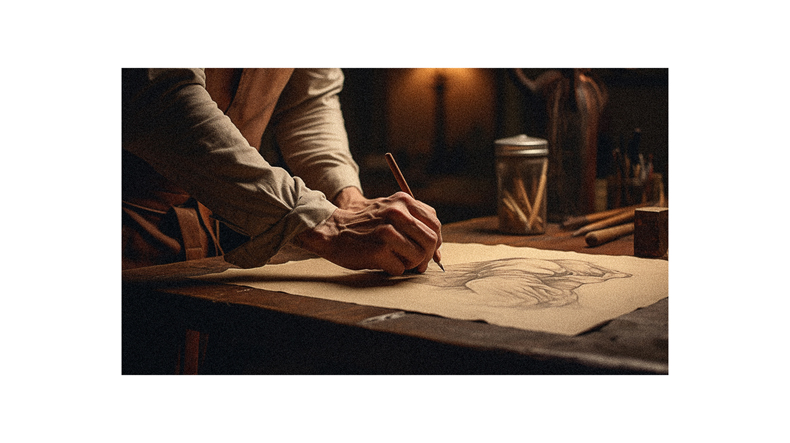Did you know that during the Italian Renaissance, artists like Antonio Pollaiuolo, Leonardo da Vinci, and Michelangelo became anatomists to enrich their depiction of the human form?
It’s a fascinating fact that shows how deeply intertwined art and science can be.
In this article, we’ll delve into the role of anatomy in classical art from various historical perspectives.
You’ll explore its evolution from Classical Greece through the Middle Ages to the Renaissance era.
We’ll also touch upon how religion influenced this aspect of art and discuss how artists played a vital role in advancing knowledge about human anatomy.
So sit back as we take you on a journey tracing back to when artists didn’t just paint bodies but dissected them, too!
This intriguing blend of artistry and scientific curiosity makes for an exciting read!
Classical Greece
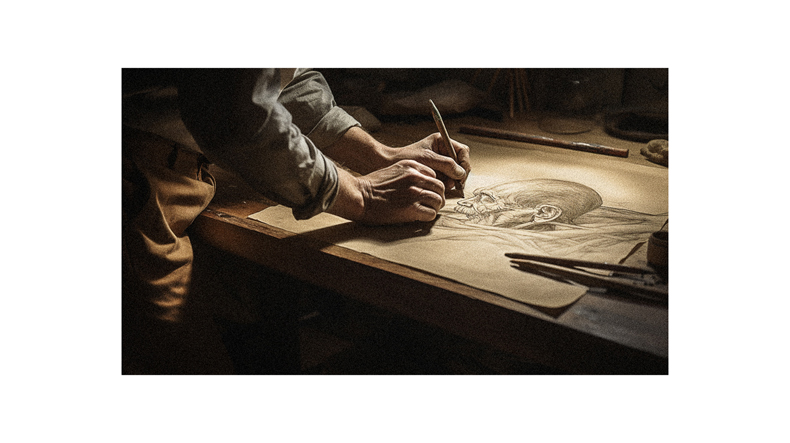
It’s truly astounding. Back in Classical Greece, even with limited resources and societal taboos preventing complete human dissection, artists and physicians alike were so driven by their passion for understanding the human form that they used what was available to them – sketching from corpses and dissecting animals – paving the way for future Renaissance masters.
They lived in a time when medicine was more philosophy than science. The idea of cutting open a body – something we now consider essential to medical education – must have seemed almost sacrilegious. But despite these obstacles, they persisted.
In hindsight, it’s clear that their efforts weren’t in vain; their keen observations laid the groundwork for anatomical studies to come.
Middle Ages
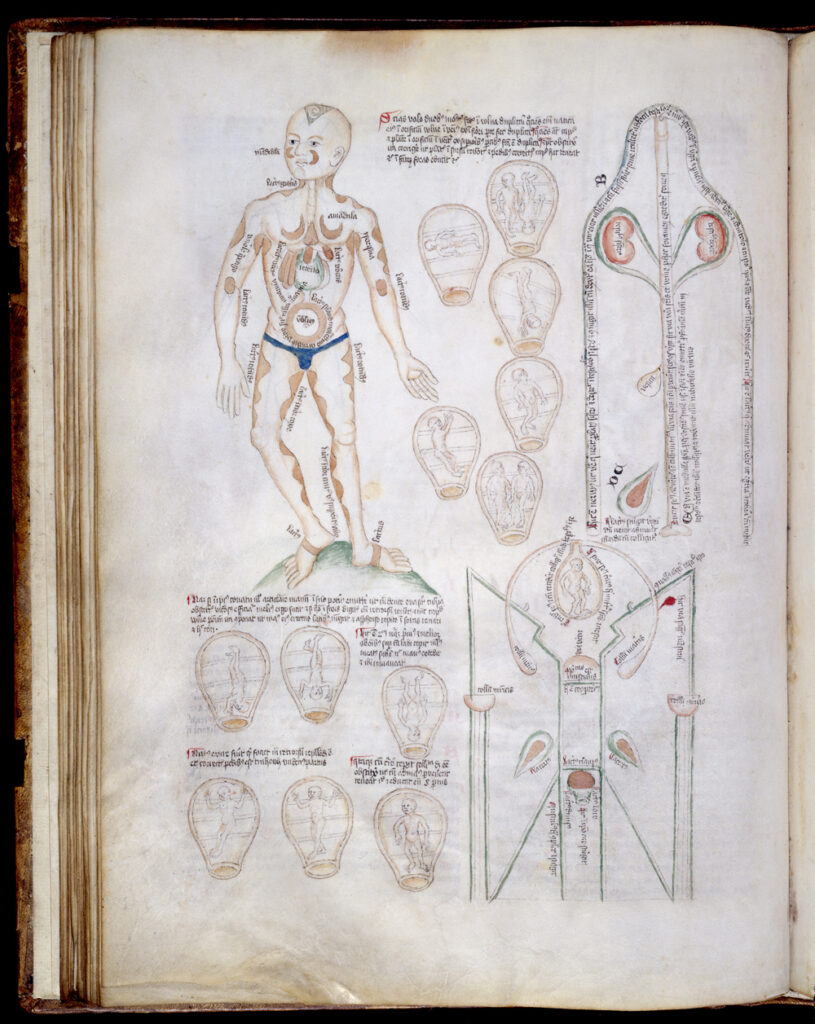
Muscle-man female anatomy. Credit: Wellcome Library, London. Copyrighted work available under Creative Commons Attribution only license CC BY 4.0 http://creativecommons.org/licenses/by/4.0/
Delving into the Middle Ages, you’ll uncover a time when medicine and anatomy hit a standstill, largely due to religious beliefs about the sanctity of the human body. Back then, dissecting bodies was seen as desecrating them – a big no-no.
- Medicine still existed as a discipline but lacked innovation. It felt like everyone was rehashing old ideas from Galen or Aristotle.
- Doctors relied heavily on examining injuries and diseases with visible symptoms.
- Universities started popping up in the 12th century and demanding new information on human anatomy.
- The Pope gave occasional permission for limited dissections strictly for learning purposes.
Art during this period leaned towards religion and style, but some depict anatomical studies.
Renaissance Era
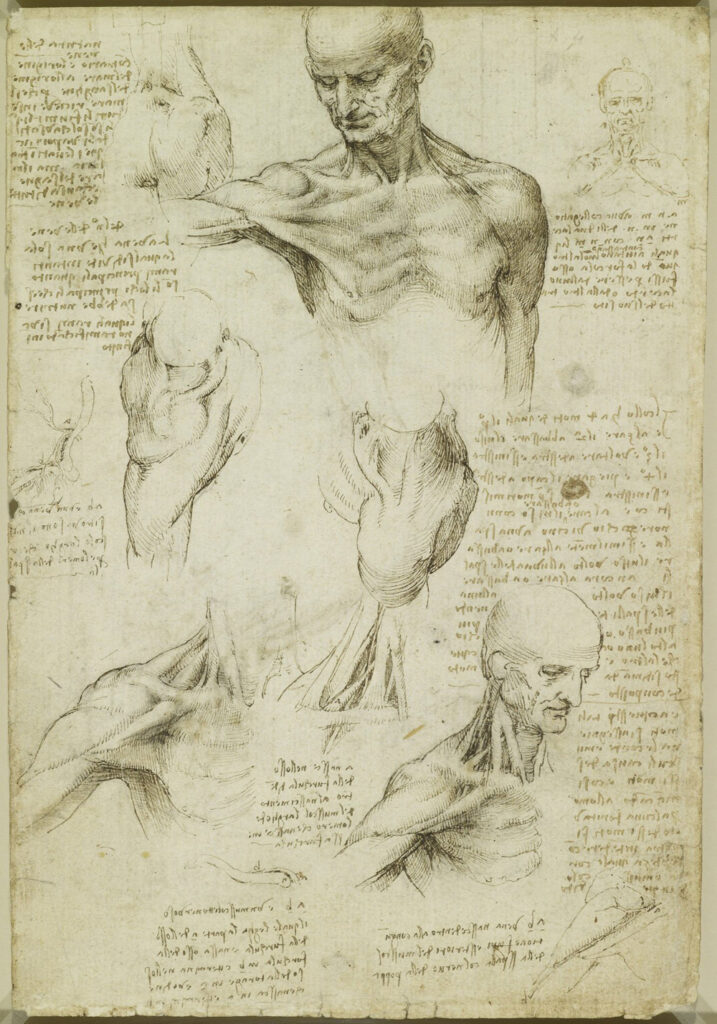
Leonardo da Vinci – RCIN 919003, Recto The superficial anatomy of the shoulder and neck / Via Wikimedia Commons
Contrary to the Middle Ages, the Renaissance era saw artists and scientists pushing boundaries by attending public dissections or even conducting their own, all in pursuit of a more profound understanding of the human form.
You’d find famous artists like Leonardo da Vinci and Michelangelo not shying away from dissecting bodies to perfect their art. Their detailed observations and drawings changed how anatomy was perceived.
Meanwhile, human dissection remained under strict limitations, often restricted to convicted criminals only. Even so, physicians weren’t held back; they started creating comprehensive anatomical works with skilled artists’ help, such as Andreas Vesalius’s De humani corporis fabrica.
The book served as both an extension and refutation of Galen’s work on anatomy.
Influence of Religion
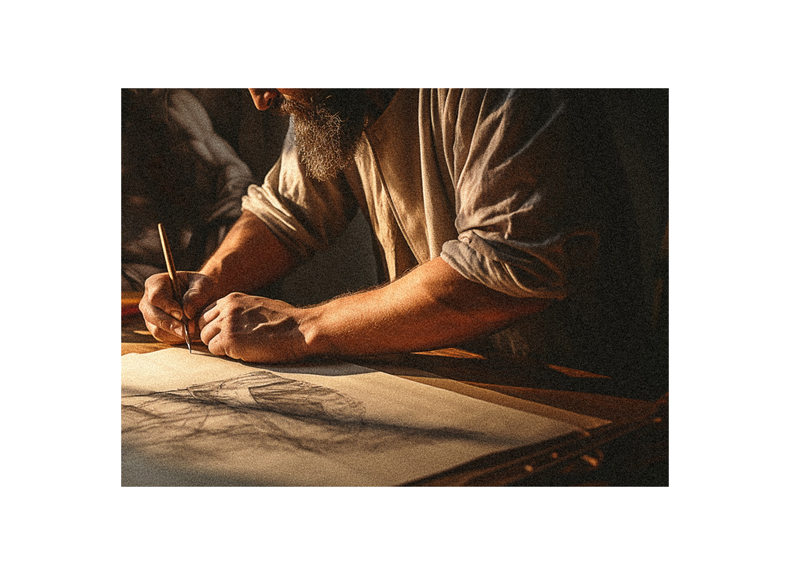
Religious beliefs during these historical periods often played a major role in shaping people’s attitudes toward human dissection and the study of the body. You’d find that religious taboos often limited artists’ access to cadavers for dissection.
This was especially so during the Middle Ages when Christianity frowned upon what it considered ‘desecration’ of the human body. But by Renaissance times, religion became less of an obstacle. Popes even issued decrees allowing rare human dissections for educational purposes.
As an art enthusiast, you’ll appreciate how this shift in religious stance paved the way for iconic works from greats like Leonardo da Vinci and Michelangelo, who used anatomical studies to bring their masterpieces to life.
Role of Artists
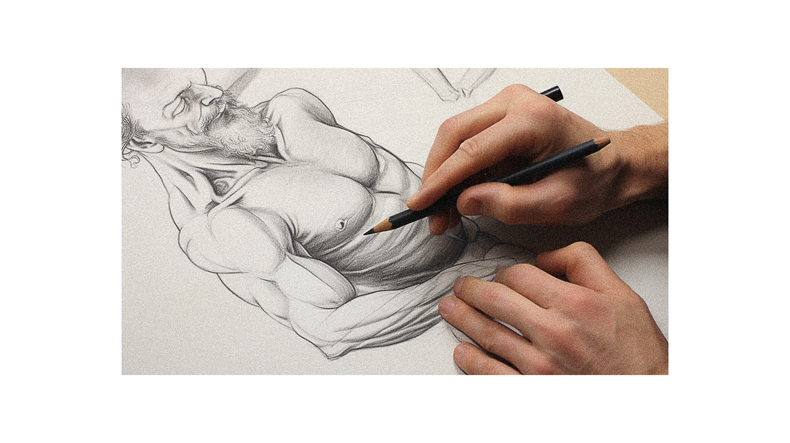
Dive into the texture of this narrative, and you’ll soon realize that artists weren’t just dabbling in pigments and chisels during the Renaissance period. They were also dissecting human bodies, peeling back layers of skin and muscle to reveal what lay beneath. This practice may seem macabre by today’s standards, but it was essential for them to truly capture the essence of their subjects on canvas or stone.
- Antonio Pollaiuolo was a pioneer in this field. He was the first artist known to perform dissections.
- Leonardo da Vinci and Michelangelo took it further with detailed anatomical dissections. They raised the bar for anatomical accuracy in art.
- The detailed studies from these artists helped develop a consistent vocabulary for anatomical illustration. They set a new standard for future generations of artists.
Follow us on Pinterest for more tips, tutorials, and artist reviews!

